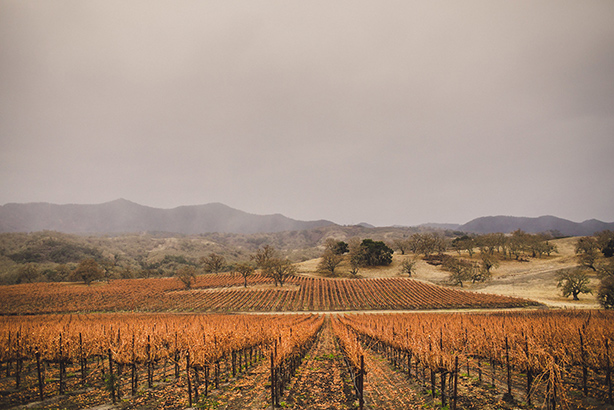Wintertime is still upon us at our estate Margarita Vineyard. The mornings are cold, and the vines remain skeletal and dormant. We are experiencing our second straight winter with ample rainfall, so the earth is soft and replenished.
At first glance, it may look like the vines are simply taking a big nap. But with springtime right around the corner, there is much more going on than meets the eye. In fact, the vineyard is very much active and alive, and the vines are preparing themselves to burst forth with what will ultimately become the 2024 vintage wines of Ancient Peaks.
Stealth Energy
After harvest, the vines lose their leaves and transition to a state of dormancy. Dormancy is triggered by the shorter, colder days of winter, which signal to the vine that its heavy lifting is done for the year.
Yet despite appearances, the vines have not stopped growing. Indeed, while vines use their energy to grow leaves and grapes in the spring and summer, they redirect their energy to the root system come winter. The roots remain active, absorbing micronutrients that keep the vine ticking until spring—at which point the growth cycle begins anew.
So what you end up with in winter is a vineyard that may look dormant, but that is active at the root level, up-taking nutrients so that it is recharged for bud break in the spring.

Critical Cuts
Our vineyard team also remains active during the winter. They begin pruning, which takes a few months to complete. They make repairs to vine stakes, irrigation emitters and other equipment that may have been damaged during harvest. They also apply compost throughout the vineyard, to ensure that the vine roots have ample micronutrients to feast upon.
Winter pruning sets the stage for success in the fall. It takes a lot of training and experience to prune well, and our crew is up to the task. They know how to space the spurs—the knobs from which the shoots grow—make the right cuts and position everything for a healthy vine canopy to come.
At Ancient Peaks, our team leaves just one bud per spur when making their cuts, which severely limits the resulting crop load. “We prune for quality, not quantity,” says co-owner and viticulturist Doug Filipponi. “It’s a sacrifice that we’re willing to make to get the most intense flavors out of our grapes.”